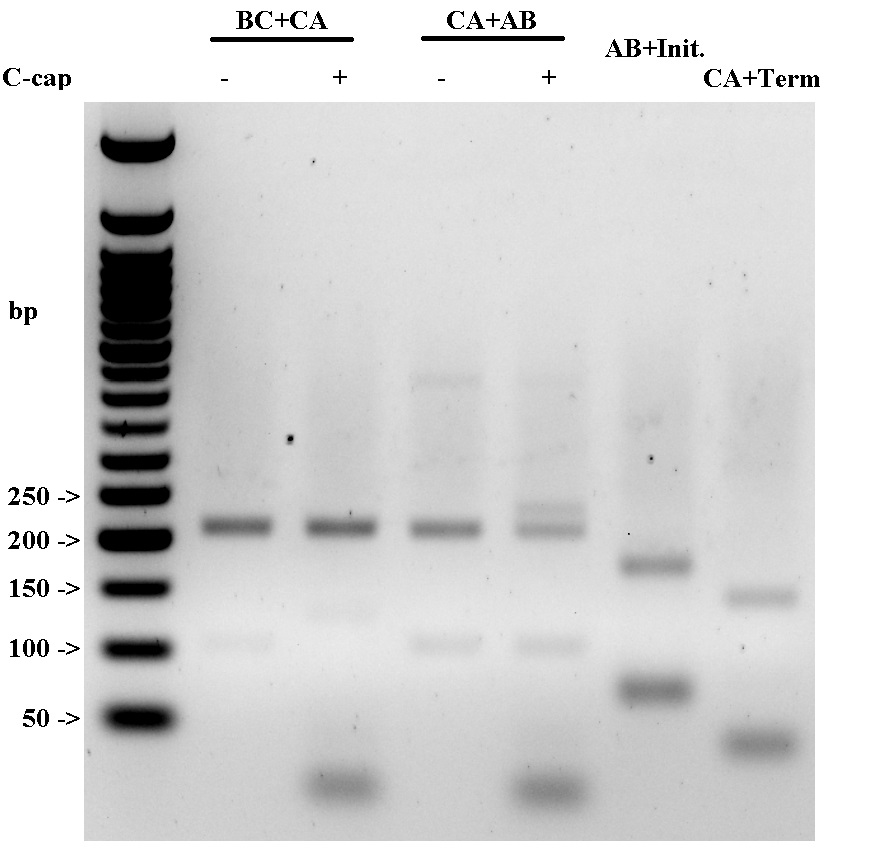Team:UCLA/Notebook/Spider Silk Genetics/5 June 2015
6/5/2015
ICA Oligo Characterization
- The results from 6/3/2015 showed that C-cap could bind to MaSp2 CA.
- We want to find out which sticky end the c-cap binds to.
- If the C-sticky end is bound, then there should be no problem.
- If the A-sticky end is bound, it could possibly interfere with ICA by competing with binding to MaSp2 AB.
- We also decided to test the initiator and capping oligos again, but at a higher concentration.
- We set up the following ligation reactions.
- 2 reactions each of BC+CA and CA+AB were set up using 50 ng of each fragment.
- AB+Init and CA+Term were set up using 1 uL of 5 uM oligo in each.
- Used T7 polymerase for all 6 reactions. Incubated for 10 minutes at 25 C.
- After incubation, 1 uL of 5 uM working C-Cap was added to one BC+CA reaction and one CA+AB reaction each, and incubated for another 10 minutes at 25 C.
Results
- Cast 2.5 % TAE gel for visualization, used 2 uL of 50 bp ladder.

Fig. 1 The BC+CA reactions with or without C-cap show no double band character at the 200 bp mark. The CA+AB+C-cap reactions exhibits a double band similar to the CA+C-cap reaction from 6/3/2015. AB+init exhibits a band at approximately 160 bp. CA+term exhibits a band at approximately 140 bp.
- From these results, we can conclude that C-cap binds to the C-sticky end, and not the A-sticky end. We will be able to proceed with ICA as planned.
- The initiator and terminator work as intended. The expected band sizes are 161 bp and 141 bp respectively.
- All bands smaller than 100 bp correspond to unligated oligos.
- In addition, there is a faint band at about 450 bp in the CA+AB reactions. We currently have no explanation for this, but the band size is similar to undigested MaSp2 that was amplified with VF/R primers.
